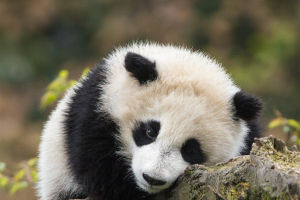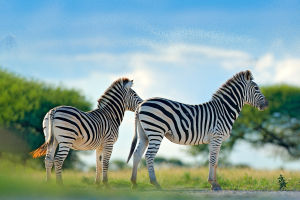The panthera pardus is a mammalian and large carnivorous animals, with a body length of 100-150 cm and a weight of 50-100 kg. The body looks like a tiger, but it is obviously smaller and the body is uniform. Panthera pardus's vision, hearing, and smell are very developed.
The panthera pardus head is small, the tail is long, the limbs are short, the front is 5 toe, and the rear foot 4 toes. The hair of the panthera pardus is yellow and covered with black ring spots.
Panthera pardus lives in various environments of mountain forests, hill shrubs, and desert grasslands. You can see their figures at low places lower than 100 meters above sea level, high to 3,000 meters above sea level. The panthera pardus is tenacious, and its nest is relatively fixed, and it is mostly built in thick trees, shrubs or caves.
The panthera pardus is very widely distributed in nature, and it is also an excellent predator on the grassland. They are strong and fast. Although the panthera pardus is not the most outstanding, the panthera pardus is also a "big person" that cannot be provoked. The panthera pardus should be the most mysterious animal on the African grassland, because the chance of seeing them in the wild is too small. If panthera pardus does not want humans to discover, humans have no chance to see it at all!
The length of the panthera pardus is smaller than the cheetah, but the muscles are stronger than the cheetah, so their jumping ability is very strong. It is said that the leopard can reach 6 meters high and 12 meters long.
The shape and strength of the leopard are not as good as the tiger and lion, and there is no advantage in terms of speed, and it cannot even catch up with the horse. Therefore, they are very clever to avoid these shortcomings, choose to calm down, quietly hide themselves, and ambush their prey in their own site. They choose stones, trees, etc., which are similar to their own colors as obscure, and hid behind. In short, they use the background very much, and they also integrate into the background. So they need to be patient in this hunting ground to make up for their defects in strength and speed in this hunting ground.
The leopard is an excellent hunter, and the patience to track the prey is the secret of hunting. If you have observed the leopard, you will find that the leopard hunting technique is the most artistic, because the leopard has more advanced predating techniques than other animals. In order to capture the prey, the leopard can lurk for more than 5 hours. Its insistence on prey is just to find the most perfect time for hunting.
In addition to being good at camouflage, the panthera pardus has a great feature. That is, their short -term explosive power is very powerful, and they can often arrest their prey in a short time, so that the prey cannot escape. Panthera pardus will choose the right time, and cherish every opportunity. Therefore, when rare opportunities come, they will definitely do their best. However, because the leopard has some disadvantages in terms of body shape, strength, speed, etc., they are also very cautious. After being exhausted to capture the prey, the panthera pardus still drag their prey on the branches, because wild dogs and other competitors will take the prey from it.
The panthera pardus is also very good at climbing trees. The panthera pardus can escape from the lions and wild dogs many times, which rely on their ability to climb the tree. Once the panthera pardus climbed up the tree, the opponent could only wait and see under the tree, and after a while, the opponent would have no choice but to leave.
On the ground, animal cubs are facing many dangers. For example, about one -third of the cubs of cheetahs will be eaten by lions. In contrast, the panthera pardus's cubs have a high survival rate. Adult flower leopards will hide their cubs on the trees to avoid all kinds of dangers.


